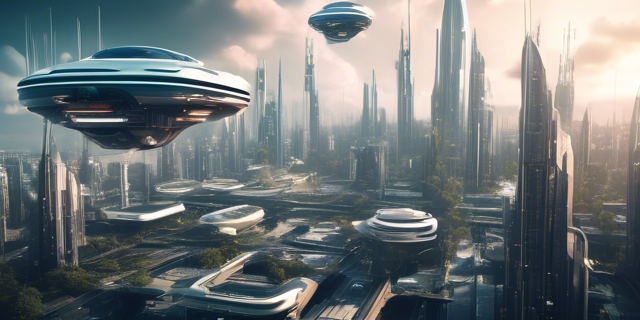The world of technology evolves rapidly, and 2025 promises to be no exception. With groundbreaking innovations and advancements, staying updated on emerging tech trends can help individuals and businesses thrive in a competitive landscape. Here’s a look at the top tech trends shaping 2025.
1. Artificial Intelligence (AI) in Everyday Life
AI continues to integrate seamlessly into our daily routines, with advanced personal assistants, AI-driven customer service, and more.
Key Applications:
- Personalized shopping experiences using AI algorithms.
- Smart home systems powered by AI to enhance convenience and security.
- AI tools for automating repetitive tasks in businesses.
Why It Matters:
AI’s increasing accessibility empowers individuals and organizations to optimize productivity.
2. 5G Expansion
The global rollout of 5G technology is transforming connectivity and enabling faster, more reliable internet.
Impact on Industries:
- Revolutionizing remote work and telemedicine with seamless video streaming.
- Advancing autonomous vehicles and smart cities with real-time data exchange.
- Enhancing gaming and entertainment experiences with ultra-low latency.
Why It Matters:
5G paves the way for innovative solutions across various sectors, from healthcare to logistics.
3. Quantum Computing Breakthroughs
Quantum computing is set to redefine problem-solving capabilities, making previously impossible tasks achievable.
Applications:
- Drug discovery and development in the pharmaceutical industry.
- Optimization of supply chains for efficiency.
- Advanced cryptography to enhance cybersecurity.
Why It Matters:
Quantum computing offers unparalleled speed and computational power, solving problems that traditional computers cannot.
4. Sustainable Technology
As climate concerns grow, sustainable tech innovations are gaining traction in 2025.
Notable Innovations:
- Renewable energy solutions, such as solar and wind advancements.
- Eco-friendly data centers with reduced carbon footprints.
- Circular economy models for recycling electronic waste.
Why It Matters:
Sustainable technology supports a greener future and aligns with global environmental goals.
5. Extended Reality (XR): Merging Realities
Extended Reality, encompassing Virtual Reality (VR), Augmented Reality (AR), and Mixed Reality (MR), is redefining digital interactions.
Where It’s Being Used:
- Immersive learning experiences in education and training.
- Enhanced shopping experiences with AR-powered virtual try-ons.
- Virtual tourism and real estate tours for global audiences.
Why It Matters:
XR bridges the gap between digital and physical worlds, creating limitless possibilities for businesses and consumers.
6. Blockchain Beyond Cryptocurrency
Blockchain technology is finding applications beyond cryptocurrencies like Bitcoin and Ethereum.
Emerging Use Cases:
- Secure and transparent voting systems.
- Supply chain tracking for authenticity and quality assurance.
- Decentralized finance (DeFi) platforms for seamless transactions.
Why It Matters:
Blockchain enhances transparency, security, and efficiency across industries.
7. Autonomous Vehicles and Smart Transportation
Self-driving cars and AI-powered transportation systems are closer to becoming mainstream.
Key Developments:
- Autonomous delivery drones and robots.
- Smart traffic management systems to reduce congestion.
- Electric and self-driving taxis in urban areas.
Why It Matters:
These advancements promise safer, more efficient, and environmentally friendly transportation.
8. Healthcare Tech Innovations
Healthcare continues to benefit from technological advancements, improving patient care and treatment options.
Exciting Innovations:
- AI-driven diagnostics for faster and more accurate results.
- Wearable health tech to monitor and manage chronic conditions.
- Telemedicine platforms for remote consultations and treatment.
Why It Matters:
Innovations in healthcare tech save lives and make medical services more accessible.
9. Edge Computing
Edge computing reduces latency by processing data closer to its source rather than relying solely on cloud computing.
Applications:
- IoT devices for real-time decision-making in smart homes and cities.
- Enhanced gaming experiences with minimal lag.
- Autonomous vehicles that require instant data processing.
Why It Matters:
Edge computing ensures faster and more reliable data handling, critical for time-sensitive applications.
10. Human-Machine Collaboration
Robots and humans are working together more seamlessly in 2025, thanks to advancements in machine learning and robotics.
Examples:
- Cobots (collaborative robots) in manufacturing.
- AI-powered tools assisting creative professionals in design and content creation.
- Virtual assistants supporting employees in administrative tasks.
Why It Matters:
Human-machine collaboration boosts efficiency and innovation across industries.
The tech trends of 2025 offer exciting opportunities for innovation, problem-solving, and growth. Staying ahead of these developments can give you a competitive edge in a technology-driven world.
Which of these tech trends excites you the most? Let us know in the comments, and stay tuned for more updates on the future of technology!



